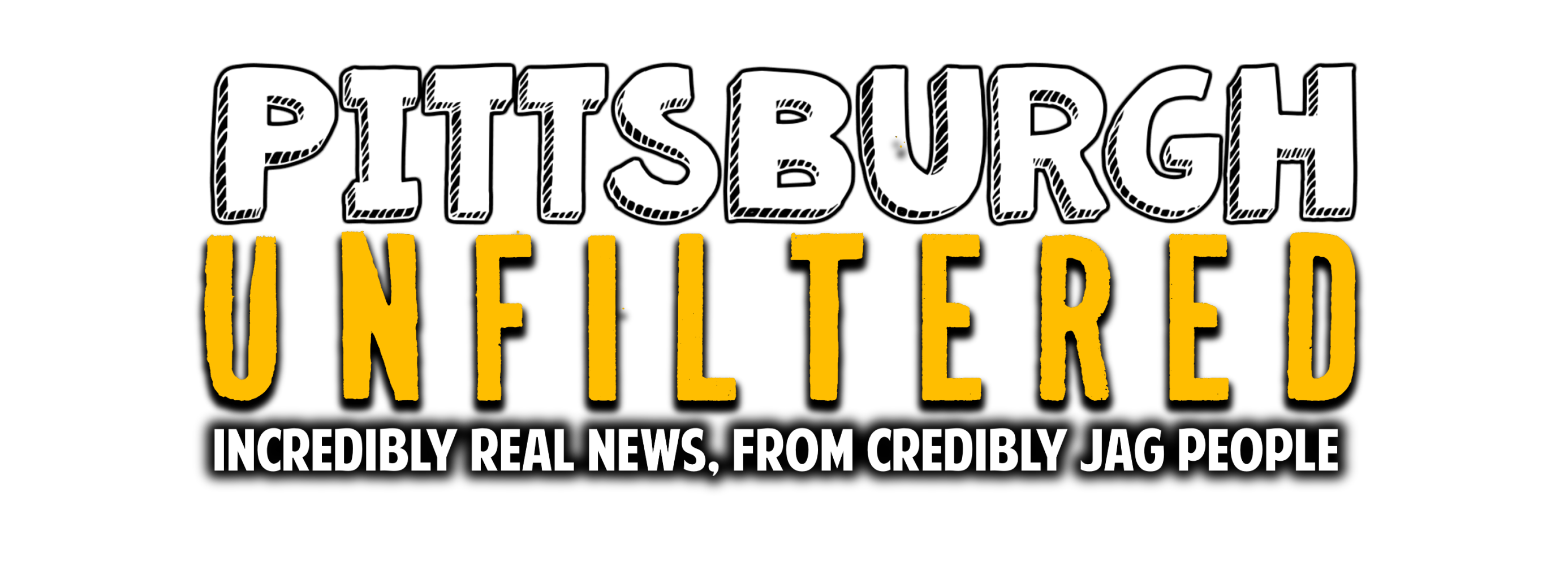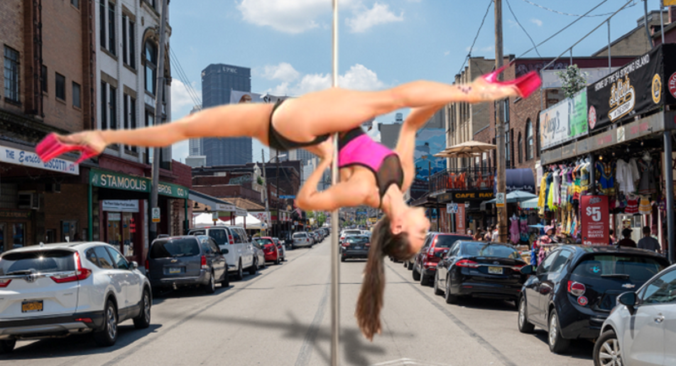When I was little, I thought the Strip District served as the hub for something salacious — something so indecent it demanded a private corner of the world to house the degenerates it attracted. The idea of “stripping” impurities from steel surfaced less frequently on my cognitive radar than the vision of a person riding a pole for money.
At that age, the hyperbole of some urban island of miscreants felt appropriate. The stretch of stoplights and hulking buildings along Grant and then Liberty Avenue loomed like so many locks and dams, punctuated waves of traffic finally able to cast off into the frenetic storm of humanity all bottled within about seven or eight blocks.
Even as the term itself changed for me as a teenager, the place’s reputation hadn’t entirely, for different reasons altogether: if only my health teachers had spent less time diverting me from the ever-present dangers of smoking and instead cautioned me against going to Club Zoo, where some of the area’s most eminent alpha males used reverse fake IDs to rub their hands and lick their lips in a manner that alone warranted jail time.
Now old enough to have disabused myself of any misconceptions of isolated carnal excess — I’ve been to Cheerleaders and it’s still more kept-together than some spots around here — I’ve realized something far greater:
The Strip is life.
Our collective reverence peeks out in even the most casual mentions of the place. Mere utterance of “the Strip” resonates with an air of some twisted penal colony drafted by a Czech loner with a dick dad and no friends. In fact, sometimes we don’t even “go” or “head” to the Strip, for it simply is the activity, the entire itinerary even, an all-encompassing understanding that answers a million different questions or, we later realize, none at all besides the title to seemingly arbitrary borders on a map. The Strip is shopping. It is dining. It is strolling and hustling, bartering and bullshitting, sipping and chugging, wandering and hunting. It’s everything, impossibly crammed into five letters we use for a sloppy rectangle of land resting along the Allegheny.
The Strip is feeling, sensation.
It’s a clamoring social event, even when patrolling the streets on your own. Our footsteps do the talking. Our gait is our tone of voice, at times declaring our intentions, resolute and firm, but in other moments aimless or indifferent, like being lost in conversation that we’re so familiar with we can join back in at our leisure.
The streets reek. Oh, sure, in the quite literal sense, as we cut into alleyways and endure the unsavory blend of garbage and stray cigarette smoke from workers on break, but breathe deeper and you’re confronted with a scent far more cerebral: purpose. It pervades the paths on Penn, like the satisfying raw scent of Earth when we till it, the aroma concentrating the longer we labor through our to-do list or reap the experiences we share there.
A day on the Strip is the soundtrack from which the bazaars of high-fantasy novels are born. Literary strokes of “bustling masses” and “hawking wares” find their home in the ever-changing array of rhythms and melodies blaring from the commotion of the deli counter, the hissing of coffee makers, and the “merchants” alluring passersby with the offer of a pepperoni roll. Though English dominates, the unique slices and fades of those speaking it land in and out of earshot, even those curiously stubborn ones who refuse to round out their vowels — “Git ahta tahn! Ain’t no way yinz did dat.” — with claims to be practicing the same language as everybody else.
The Strip is a moving portrait of urbanity, teeming with endless strata, each one standing out as a slightly different shade of ethnicity, socioeconomics, creed, demeanor, and every minute touch of personal hues that make the color unique. It is our city, condensed, like soup to which you’ve added no water, causing the flavor to be that much more present.
It’s not just the good in our city, either. It’s all of it.
It’s conflict — waged not just by motorists vying over a prime parking spot, but between the very threads of time itself. Massive condos seem to silhouette the long-standing storefronts along Smallman and Penn, as we struggle to dust ourselves off from decades of economic turmoil and change to forge a new, a better identity. But what is it, and how do we become something new, something meaningful in a modern world without forsaking the bits of individuality that furnish the spiritual warmth emanating from the Strip? Is the pen scribbling a signature upon a new development deal in fact a scythe slowly looming over the things we love?
Oh and the assholes…they’re everywhere! They dawdle in busy thoroughfares, they brush up against you as you walk by in a display of misplaced machismo — they probably learned it at Club Zoo. They speed through pedestrian walkways, they park as though they were taking the driving test and Satan sat in the back ready to banish them to an eternity of damnation for the slightest tap of the bumper. They’re privately prejudiced or they’re openly disrespectful, thinking themselves bigger than ourselves, despite being just another mote of dust in the pulsing microcosm that is the Strip.
Indeed, I once thought the Strip harbored purveyors of the seedy and the sinister, and it still does, in its own way. However, I’ve gleaned over the years it is so much more. It is everything, caught in a perpetually stirred snow globe of city life, and I wouldn’t trade it for anything.
Now, I just need to find a way out of paying this parking ticket.

